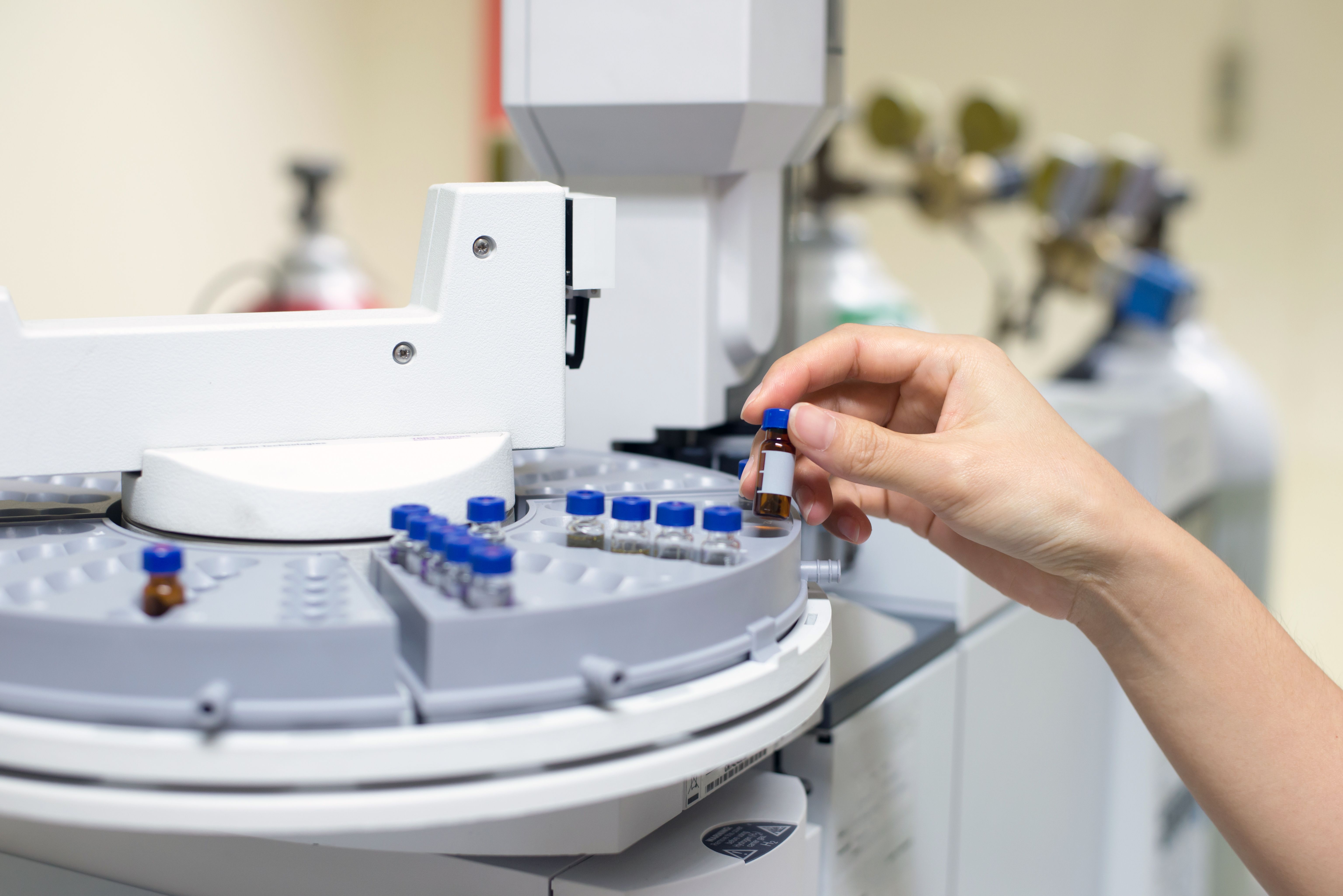Predicting LC Retention Times to Improve HRMS
During the North American Chemical Residue Workshop, scientists discussed predicting liquid chromatographic retention times to identify contaminants.
At the North American Chemical Residue Workshop on Tuesday, Julien Parinet of the ANSES Laboratory for Food Safety, presented a study on identifying contaminants, by-products, and metabolites. He also explained how predicting liquid chromatographic retention times (RT) can be useful in this process (1).
Scientist hand holding an amber vial, Vials in the autosampler tray. Chemistry lab | Image Credit: © bigy9950 - stock.adobe.com

Using different approaches to predict LC retention times can be an efficient means of discriminating and selecting between several molecular formulas and structures.
A major part of this process involves developing quantitative structure-retention relationship (QSRR) models, which establish a link between a chemical structure and a property, in this case the chromatographic retention time. These models require both a wide selection of molecular descriptors based on known chemical structures and machine learning algorithms, which need constant optimization.
The seminar concluded with a methodology proposal partly based on QSRR, so that the annotation process (as published by Schymanski and colleagues in 2014) can be improved and secured further.
Reference
(1) Parinet, J.; Wong, J.; Wang, J.; Makni, Y.; Diallo, T.; Guérin, T. Liquid chromatographic retention time prediction models to secure and improve the feature annotation process in high-resolution mass spectrometry.In Book of Abstracts, 2023 North American Chemical Residue Workshop, Fort Lauderdale, Florida.
New Method Explored for the Detection of CECs in Crops Irrigated with Contaminated Water
April 30th 2025This new study presents a validated QuEChERS–LC-MS/MS method for detecting eight persistent, mobile, and toxic substances in escarole, tomatoes, and tomato leaves irrigated with contaminated water.

.png&w=3840&q=75)

.png&w=3840&q=75)



.png&w=3840&q=75)



.png&w=3840&q=75)


